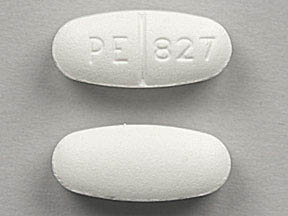Durabac Forte Interactions
There are 761 drugs known to interact with Durabac Forte (acetaminophen / caffeine / magnesium salicylate / phenyltoloxamine), along with 25 disease interactions, and 5 alcohol/food interactions. Of the total drug interactions, 45 are major, 671 are moderate, and 45 are minor.
- View all 761 medications that may interact with Durabac Forte
- View Durabac Forte alcohol/food interactions (5)
- View Durabac Forte disease interactions (25)
Most frequently checked interactions
View interaction reports for Durabac Forte (acetaminophen / caffeine / magnesium salicylate / phenyltoloxamine) and the medicines listed below.
- A-Pak Laboratories Paediatric Analgesic Paracetamol (acetaminophen)
- acetaminophen / dextromethorphan / phenylephrine
- acetaminophen / hydrocodone
- alprazolam
- amlodipine
- amoxicillin
- Benadryl (diphenhydramine)
- ciprofloxacin
- estradiol
- furosemide
- gabapentin
- omeprazole
- pseudoephedrine
- trazodone
- Tylenol Cold Multi-Symptom Nighttime (acetaminophen / chlorpheniramine / dextromethorphan / phenylephrine)
- XiraTuss (carbetapentane / chlorpheniramine / phenylephrine)
- zolpidem
Durabac Forte alcohol/food interactions
There are 5 alcohol/food interactions with Durabac Forte (acetaminophen / caffeine / magnesium salicylate / phenyltoloxamine).
Durabac Forte disease interactions
There are 25 disease interactions with Durabac Forte (acetaminophen / caffeine / magnesium salicylate / phenyltoloxamine) which include:
- alcoholism
- liver disease
- cardiac disease
- hypertension
- psychiatric disorders
- PUD
- GI toxicity
- renal dysfunction
- Reye's syndrome
- PKU
- anticholinergic effects
- asthma/COPD
- cardiovascular
- renal/liver disease
- cardiotoxicity
- liver disease
- renal dysfunction
- seizure disorders
- hypermagnesemia
- GERD
- anemia
- coagulation
- dialysis
- G-6-PD deficiency
- hepatotoxicity
Drug Interaction Classification
| Highly clinically significant. Avoid combinations; the risk of the interaction outweighs the benefit. | |
| Moderately clinically significant. Usually avoid combinations; use it only under special circumstances. | |
| Minimally clinically significant. Minimize risk; assess risk and consider an alternative drug, take steps to circumvent the interaction risk and/or institute a monitoring plan. | |
| No interaction information available. |
See also:
Further information
Always consult your healthcare provider to ensure the information displayed on this page applies to your personal circumstances.


